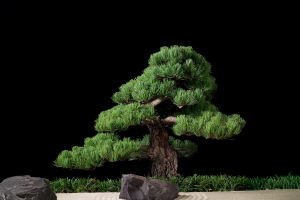Move Knees, Not Meds
Last weekend, I watched my 68-year-old neighbor walk her dog up a steep hill—no grimacing, no hand on her knee, just steady steps and a smile. Six months earlier, she could barely get out of a chair without wincing. Her secret wasn't surgery or a miracle cream.
It was a simple 15-minute routine she did every morning: slow leg lifts, seated marches, and gentle stretches. "I stopped avoiding movement," she told me, "and started working with my knees instead of against them."
And that's the breakthrough so many of us miss: stiff, achy knees often get worse from too little motion—not too much.
Why Movement Heals (Not Hurts) Knees
Your knees aren't fragile hinges—they're dynamic joints powered by muscles, cartilage, and synovial fluid (the natural "oil" that keeps them gliding smoothly). When you stop moving, that fluid stagnates, muscles weaken, and stiffness sets in.1. Cartilage thrives on motion – Unlike other tissues, knee cartilage gets nourishment from movement. Gentle bending and straightening pump nutrients into the joint.
2. Strong quads = less joint stress – Every pound of muscle around your knee absorbs impact. Just 10% stronger quadriceps can reduce knee joint load by up to 30% during walking.
3. Flexibility prevents strain – Tight hamstrings or calves pull on the knee, altering alignment. Daily stretching keeps everything in balance.
Dr. Stephen P. Messier, a leading researcher in osteoarthritis and preventive musculoskeletal medicine at Wake Forest University, highlights the power of lifestyle intervention: “Our work shows that combining exercise with modest weight loss is among the most effective non‑drug strategies for knee osteoarthritis — reducing pain, improving function and altering disease trajectory.”
Three Foundational Moves to Start Today
You don't need weights or a gym. These evidence-backed exercises can be done at home, even while watching TV.1. Straight leg raises – Lie on your back, one knee bent, the other straight. Tighten thigh muscle, lift leg to height of bent knee, hold 3 seconds, lower slowly. Do 2 sets of 10 per leg daily. Builds quad strength without joint compression.
2. Heel slides – Lie on your back, slowly slide heel toward your buttocks, bending the knee as far as comfortable. Hold 5 seconds, slide back. Repeat 10 times. Maintains range of motion.
3. Calf stretches – Stand facing a wall, hands on wall, one foot back. Keep back heel down and leg straight. Lean forward until you feel a stretch in the calf. Hold 30 seconds. Repeat 2x per leg. Reduces pull on the knee.
Common Mistakes That Make Knees Worse
Good intentions can backfire if form or frequency is off.1. Doing deep squats too soon – If your knees are stiff or painful, avoid going below 90 degrees. Shallow, controlled squats are safer and still effective.
2. Ignoring pain signals – Mild muscle fatigue is okay; sharp or worsening joint pain isn't. Stop if pain increases during or after exercise.
3. Skipping rest days – Muscles repair and strengthen during rest. Aim for movement most days, but allow recovery—especially when starting out.
Building a Sustainable Knee Routine
Consistency beats intensity. A little every day creates lasting change.1. Pair exercise with a habit – Do your leg lifts right after brushing your teeth or during your morning coffee. Anchoring builds automaticity.
2. Track progress simply – Note how far you can bend your knee or how many stairs you can climb without discomfort. Small wins fuel motivation.
3. Add low-impact cardio – Once basic strength improves, walk, swim, or use an elliptical 20–30 minutes, 3x/week. Movement circulates joint fluid and boosts overall resilience.
Your knees weren't designed to sit still—they were built to bend, climb, squat, and rise again. You don't need to run marathons or lift heavy weights to keep them strong. Just move with care, consistency, and kindness. Because the best medicine for your knees isn't found in a bottle—it's in the quiet rhythm of daily motion that says, "I'm still here, and I'm not giving up on you." And that's a promise your body will thank you for, one step at a time.
-
 Bonsai Care GuideWhat Makes Bonsai A Living Art? See How Simple Care Turns Tiny Trees Into Timeless Masterpieces!
Bonsai Care GuideWhat Makes Bonsai A Living Art? See How Simple Care Turns Tiny Trees Into Timeless Masterpieces! -
 Strong Gains With Yogurt!Can Greek Yogurt Calm Muscles Better Than Carbs? Workout Recovery Truths Shock!
Strong Gains With Yogurt!Can Greek Yogurt Calm Muscles Better Than Carbs? Workout Recovery Truths Shock! -
 Groningen: Smart & ScenicHistoric canals, bold museums, gardens, markets, and easy day trips—Groningen’s highlights with clear prices, hours, and routes.
Groningen: Smart & ScenicHistoric canals, bold museums, gardens, markets, and easy day trips—Groningen’s highlights with clear prices, hours, and routes.
Copyright © zogu 2021 - 2025. All Right Reserved.